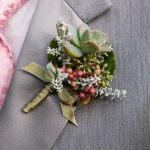Attending a Muslim wedding and wondering what to wear? Understanding the dress code for a Muslim wedding is essential to show respect for the culture and traditions of the couple getting married.
This guide will provide insight into the traditional attire for both men and women, as well as offer tips on incorporating modesty and cultural respect into your outfit. Whether you’re a guest at a Muslim wedding or simply curious about traditional Muslim attire, we’ve got you covered with everything you need to know about dressing appropriately for this special occasion.
When it comes to attending a Muslim wedding, it’s important to consider the dress code and cultural customs that may differ from Western traditions. For women, understanding traditional hijab styles and fabrics can help in choosing a modest and elegant outfit that aligns with Islamic customs.
Similarly, men can benefit from learning about traditional clothing such as thobes and sherwanis, along with guidance on appropriate accessories and footwear. Our comprehensive guide explores these aspects of traditional Muslim wedding attire, along with providing suggestions for non-Muslim guests looking to blend modesty with style.
In addition to exploring traditional attire, this guide delves into Western attire options for non-Muslim guests who may not be familiar with Islamic clothing customs. It offers suggestions for modest yet stylish outfits that are respectful of Muslim traditions while reflecting personal style.
Furthermore, the importance of respecting guidelines for modesty and dress etiquette is highlighted throughout this article, emphasizing the significance of honoring religious and cultural customs when attending a Muslim wedding. Whether you’re seeking advice on colors and fabrics or curious about where to shop for culturally-appropriate wedding attire, this comprehensive guide has all the information you need to dress respectfully for a Muslim wedding.
Traditional Women’s Attire for Muslim Weddings
Attending a Muslim wedding requires a respectful and modest attire, especially for women. Traditional women’s attire for Muslim weddings typically includes the hijab, a headscarf covering the hair, and loose-fitting garments that cover the body. The hijab comes in various styles and fabrics, such as chiffon, silk, or cotton, and may be embellished with embroidery or beading.
When choosing an outfit for a Muslim wedding, it is important to prioritize modesty while also aiming for elegance. Opt for long dresses or skirts that cover the legs entirely and long sleeves to cover the arms. Additionally, avoid form-fitting clothing to maintain a modest appearance. Modest clothing does not have to compromise style; there are plenty of beautiful options that adhere to these guidelines while still allowing personal expression.
For non-Muslim guests attending a Muslim wedding, it is essential to show respect for the couple’s culture and traditions through proper attire. Choosing an outfit that aligns with both modesty and style can be achieved by selecting clothing made from breathable fabrics such as chiffon, jersey knit, or crepe. These materials offer comfort while still meeting the requirements of modest dressing.
| Traditional Attire Guidelines | Modesty and Style |
|---|---|
| Choose long dresses or skirts with full-length sleeves | Prioritize elegance while maintaining modesty |
| Select hijabs made of chiffon, silk, or cotton | Opt for breathable fabrics like chiffon or crepe |
| Avoid form-fitting clothing | Combine cultural respect with personal expression |
Stylish Men’s Attire for Muslim Weddings
When attending a Muslim wedding, it is important for men to dress in a manner that is both stylish and culturally respectful. Traditional attire for men often includes garments such as thobes, jubbas, and sherwanis. These clothing items are not only elegant but also adhere to the principles of modesty and cultural respect. Additionally, understanding the significance of appropriate accessories and footwear can elevate a man’s ensemble for this special occasion.
Traditional Men’s Clothing
Thobes are ankle-length garments commonly worn in Arabic-speaking countries and other Muslim-majority regions. They are typically made from lightweight fabrics such as cotton or linen, making them suitable for warm weather. On the other hand, sherwanis are more formal attire often worn by grooms at Muslim weddings. These long tunics paired with trousers exude sophistication and elegance, making them an ideal choice for this celebratory event.
Guidance on Accessories and Footwear
When selecting accessories for a Muslim wedding ensemble, it is essential to opt for understated pieces that complement the outfit without overshadowing it. For example, a simple kufi hat or embroidered scarf can add a touch of tradition to the look without being overwhelming. In terms of footwear, traditional options include leather sandals or mojaris (traditional Indian shoes). Both choices offer comfort and style while harmonizing with the overall aesthetic of the outfit.
Modesty and Cultural Respect
Beyond fashion considerations, it is crucial to prioritize modesty and cultural respect when dressing for a Muslim wedding. This means choosing attire that covers the body appropriately and avoids any overly revealing or ostentatious elements that may be deemed inappropriate within the context of Islamic customs. Adhering to these guidelines not only shows reverence for the cultural significance of the wedding but also demonstrates sensitivity towards religious traditions.
By incorporating traditional men’s clothing, opting for appropriate accessories and footwear, as well as upholding modesty and cultural respect in their attire choices – male attendees can ensure they are dressed thoughtfully for a Muslim wedding while still showcasing their personal style in a respectful manner.
Western Attire Options for Non-Muslim Guests
When attending a Muslim wedding as a non-Muslim guest, it is important to dress in a way that shows respect for the couple and their cultural customs. While it may seem challenging to find an outfit that is both modest and stylish, there are several options available for those who are not familiar with traditional Muslim attire.
Here are some suggestions for modest yet stylish outfits for non-Muslim attendees:
- Long-Sleeve Dresses or Tops: Opt for dresses or tops with long sleeves to ensure adequate coverage while still looking elegant. Avoid low-cut necklines and sheer fabrics.
- Maxi Skirts or Wide-Leg Pants: Choose flowy maxi skirts or wide-leg pants to maintain modesty while staying comfortable. Pair them with a blouse or top that provides sufficient coverage.
- Jackets or Shawls: Consider wearing a lightweight jacket or shawl to drape over your outfit for added coverage, especially if your chosen attire has shorter sleeves.
It’s also important to remember that while dressing in Western attire, it is respectful to incorporate cultural elements into your outfit as a nod to the traditions of the wedding. This could include choosing fabrics and colors that align with traditional Muslim clothing, such as rich jewel tones or pastel shades, and avoiding overly revealing styles.
Ultimately, the key is to strike a balance between personal style and cultural awareness when deciding what to wear as a non-Muslim guest at a Muslim wedding. By choosing modest yet fashionable attire and incorporating respectful cultural elements into your outfit, you can honor the couple and their traditions while celebrating their special day.
Guidelines for Modesty and Dress Etiquette
When attending a Muslim wedding, it is important to adhere to guidelines for modesty and dress etiquette in order to show respect for the religious and cultural customs of the event. Modesty plays a significant role in Islamic traditions, and guests are expected to abide by certain dress codes that reflect this value. Understanding and following these guidelines is essential for dressing appropriately for the occasion.
Guidelines for Covering the Body
Women attending a Muslim wedding should choose outfits that cover their arms, legs, and décolletage. This can be achieved through long-sleeved dresses or tops, ankle-length skirts or pants, and high necklines. Additionally, many women choose to wear a headscarf or hijab as a sign of respect for the religious customs of the event. When selecting a hijab, it is important to consider fabrics that are both elegant and comfortable, such as chiffon or silk.
Men should also ensure that their attire reflects modesty by opting for long-sleeved shirts and trousers that cover the legs. Traditional clothing such as thobes or sherwanis are popular choices for men attending Muslim weddings, as they uphold cultural traditions while also being stylish.
The Importance of Dressing Conservatively
In addition to covering the body appropriately, it is important to dress conservatively in terms of fit and style. For women, this means choosing clothing that is not form-fitting or revealing but still allows for freedom of movement and comfort. Flowing maxi dresses or abayas are popular choices for women’s attire at Muslim weddings.
For men, conservative dressing involves choosing tailored clothing that fits well without being tight or overly casual. It is best to avoid shorts, t-shirts, or denim when selecting an outfit for a Muslim wedding.
By adhering to these guidelines for modesty and dress etiquette, both male and female guests can show their respect for Islamic traditions while still expressing their personal style in a culturally appropriate manner at a Muslim wedding.
Choosing the Right Colors and Fabrics
When attending a Muslim wedding, it is important to consider the appropriate colors and fabrics for your attire. The traditional colors for Muslim wedding attire are often rich and vibrant, symbolizing joy and celebration. Some popular choices include deep reds, royal blues, emerald greens, and luxurious purples. These colors not only add to the festive atmosphere but also hold cultural significance in many Muslim communities.
In terms of fabrics, natural materials such as silk, satin, chiffon, and velvet are often favored for their lustrous appearance and luxurious feel. These fabrics drape beautifully and add an elegant touch to the overall look. It is also important to consider the season when choosing your outfit. For warmer weather, lightweight fabrics like cotton or organza can help keep you comfortable while still looking stylish.
When coordinating colors and fabrics for a Muslim wedding outfit, it is crucial to be mindful of modesty guidelines. Opt for flowing silhouettes and avoid sheer or clingy materials that may compromise modesty. Additionally, it is recommended to choose outfits with full sleeves and longer hemlines to adhere to dress etiquette.
For non-Muslim guests attending a Muslim wedding, it is respectful to incorporate cultural elements into your attire while still maintaining your personal style. Whether you choose traditional Islamic clothing or opt for a fusion of Western and Eastern styles, always prioritize modesty in accordance with the customs of the occasion.
- Select rich and vibrant traditional colors such as deep reds, royal blues, emerald greens, and luxurious purples
- Choose natural fabrics like silk, satin, chiffon, velvet for an elegant look
- Consider the season when selecting your outfit; opt for lightweight fabrics in warmer weather
Do’s and Don’ts of Dressing for a Muslim Wedding
When attending a Muslim wedding, it’s important to dress in a respectful and modest manner while also incorporating your personal style. One of the most essential do’s when choosing an outfit for a Muslim wedding is to ensure that it covers the body appropriately. For women, this may mean opting for long-sleeved dresses or tops, floor-length skirts or trousers, and a hijab that covers the head and neck.
For men, traditional attire such as thobes or sherwanis are appropriate choices. It is also important to choose fabrics that are not transparent and colors that are considered respectful in Islamic customs.
On the other hand, there are several don’ts that should be kept in mind when deciding what to wear to a Muslim wedding. Avoid wearing revealing clothing such as short dresses, low-cut tops, or clothing with transparent fabrics. It’s also important to steer clear of clothing with inappropriate graphics or slogans. For both men and women, it is advisable to avoid wearing overly casual attire such as jeans and t-shirts.
In addition, it’s crucial to be mindful of cultural traditions and customs when choosing your outfit for a Muslim wedding. Taking the time to understand these traditions demonstrates respect for the couple and their families during this special occasion. Non-Muslim guests attending a Muslim wedding should be aware of these do’s and don’ts when selecting their attire in order to participate in the celebration respectfully.
| Do’s | Don’ts |
|---|---|
| Covering the body appropriately | Avoid revealing clothing |
| Choose modest colors and fabrics | Avoid transparent fabrics or inappropriate graphics |
| Understand cultural traditions | Avoid overly casual attire |
Where to Shop for Muslim Wedding Attire
In conclusion, attending a Muslim wedding is an opportunity to celebrate love and unity while respecting the cultural and religious traditions of the couple. Understanding the dress code for a Muslim wedding is essential, as it reflects the values of modesty and respect. Whether you are a Muslim guest or a non-Muslim attendee, choosing the right attire is important in showing your appreciation for the customs of the occasion.
For women, traditional attire often includes elegant hijab styles and modest yet fashionable outfits made from luxurious fabrics. When considering what to wear to a Muslim wedding as a woman, opt for clothing that covers the arms and legs while incorporating beautiful patterns and colors. For men, traditional thobes and sherwanis are classic choices, often paired with appropriate accessories and footwear.
Non-Muslim guests can also embrace cultural elements when deciding what to wear to a Muslim wedding. Modest yet stylish Western attire can be complemented with thoughtful details such as vibrant colors or intricate jewelry. Ultimately, choosing appropriate attire for a Muslim wedding allows everyone to express their personal style while honoring the significance of the celebration.
When shopping for Muslim wedding attire, consider seeking out retailers that specialize in modest and culturally-appropriate clothing. Whether you prefer browsing in-store or online, there are various options available that offer elegant choices for both men and women.
Additionally, budget-friendly options and custom tailoring services can help ensure that your outfit perfectly aligns with the dress code of the event. Overall, dressing respectfully for a Muslim wedding contributes to creating an inclusive and harmonious atmosphere for all attendees.
Frequently Asked Questions
What Does a Female Guest Wear to a Muslim Wedding?
A female guest attending a Muslim wedding should consider wearing modest and conservative attire, such as a long dress or skirt, with sleeves and a high neckline. It’s advisable to choose neutral or pastel colors and avoid anything too revealing.
What Colors Can You Wear to a Muslim Wedding?
When attending a Muslim wedding, it is best to stick to neutral and pastel colors such as light blue, blush pink, ivory, or sage green. These colors are considered appropriate and respectful within the Muslim culture, while bright or bold colors may be seen as inappropriate.
What Do You Bring to a Muslim Wedding?
When attending a Muslim wedding, guests can bring a thoughtful and culturally appropriate gift for the couple. This can include items like books on marriage, Islamic art, decorative items for the home, or financial contributions. It’s important to respect the couple’s cultural traditions when choosing a gift.

Welcome to my blog about home and family. This blog is a place where I will share my thoughts, ideas, and experiences related to these important topics. I am a stay-at-home mom with two young children. I hope you enjoy reading it! and may find some helpful tips and ideas that will make your home and family life even better!





